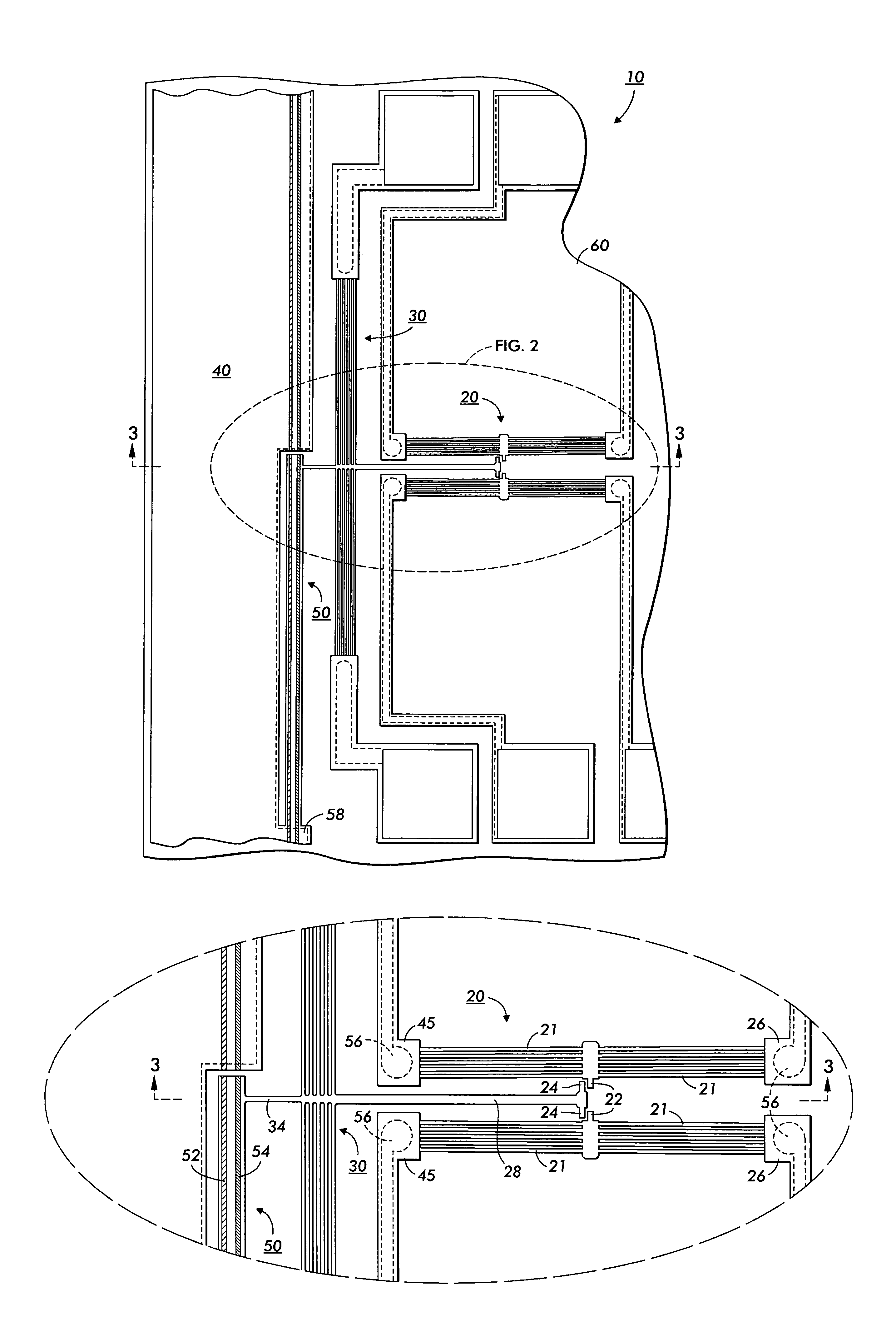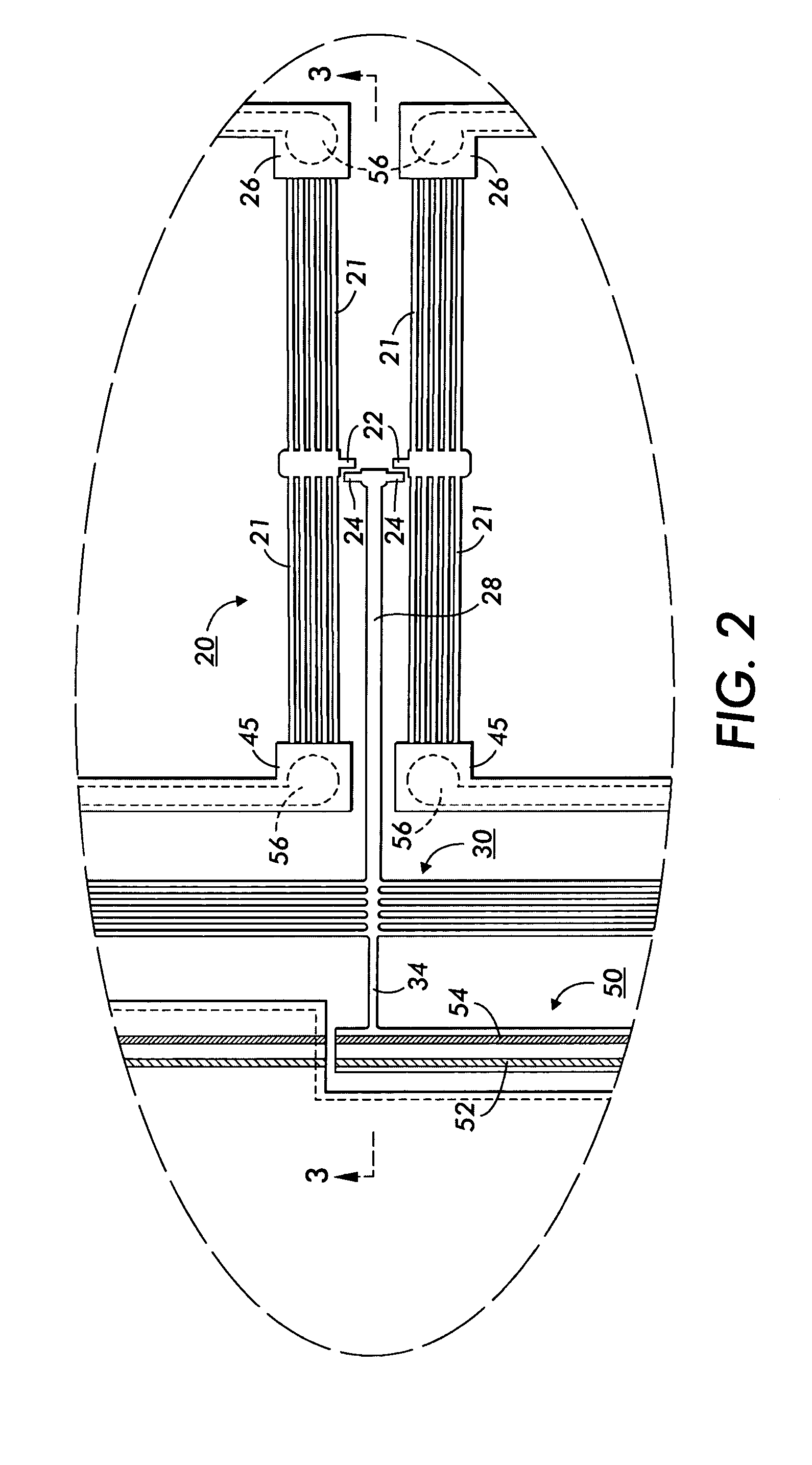Methodology for a MEMS variable optical attenuator
a variable optical attenuator and microelectromechanical technology, applied in the field of microelectromechanical systems (mems) attenuators, can solve the problems of limiting the use of variable optical attenuators (voas) to long-haul optical telecommunications networks, limiting the yield of these components, and limiting the use of low-index contrast silica-on-silicon platforms. , to achieve the effect of simplifying the network,
- Summary
- Abstract
- Description
- Claims
- Application Information
AI Technical Summary
Benefits of technology
Problems solved by technology
Method used
Image
Examples
Embodiment Construction
[0044]The teaching as provided herein below provides for an improved cantilever beam optical switch design which provides the function of switching and also performs the function of a variable optical attenuator (VOA). After the optical switching of a movable waveguide associated with the cantilever beam optical switch, a small degree of intentional misalignment of the movable waveguide will create different levels of optical attenuation. By finely controlling the misalignment of a selected switched position, the device can thereby provide the functions of both switching and attenuating. This exemplary integration of the switching function and the VOA function also reduce the optical loss which is otherwise unavoidable when the inevitable alterative of a separate switch and a separate VOA must necessarily be employed. This improved device can also be applied for correcting the difference in optical intensity created by the manufacturing tolerances inherent in the fabrication of an a...
PUM
 Login to View More
Login to View More Abstract
Description
Claims
Application Information
 Login to View More
Login to View More - R&D
- Intellectual Property
- Life Sciences
- Materials
- Tech Scout
- Unparalleled Data Quality
- Higher Quality Content
- 60% Fewer Hallucinations
Browse by: Latest US Patents, China's latest patents, Technical Efficacy Thesaurus, Application Domain, Technology Topic, Popular Technical Reports.
© 2025 PatSnap. All rights reserved.Legal|Privacy policy|Modern Slavery Act Transparency Statement|Sitemap|About US| Contact US: help@patsnap.com



